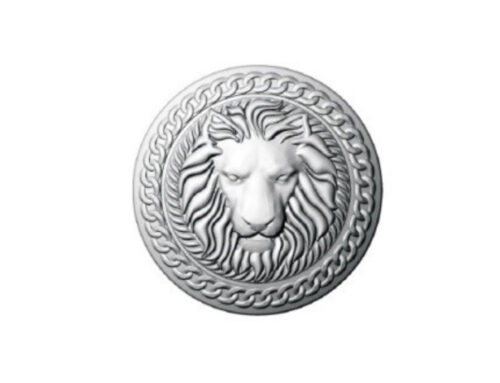SUMMARY
Lewis Hamilton has not been recognized as a famous person for trademark registration purposes by the First Board of Appeal of the EUIPO because no evidence was provided of his notoriety in 5% of the population of the EU.
“Modesty, propriety can lead to notoriety” is a verse of Sting’s famous song “Englishman in New York”. If this is true, then, according to the First Board of Appeal of the EUIPO, seven Formula 1 titles and several sport records are not sufficient to consider Sir Lewis Hamilton as a “famous person”.
Namely, on 17 October 2023, the First Board of Appeal dismissed the appeal of Sir Hamilton against the decision Opposition Division which upheld the opposition filed Hamilton International AG, owner of the word EUTM “Hamilton” (registered in classes 9 and 14) against the EUTM application of the word mark “Lewis Hamilton” for products falling under class 14 of Nice Classification, i.e. “Precious metals and their alloys; jewellery; precious stones; clocks; wrist watches; horological and chronometric instruments; coins; trinkets; key rings and fobs; works of art in precious metals; trophies, medals and awards in precious metals; parts, fittings and accessories for all the aforesaid”.
If few (and marginal) doubts can exist on the similarity/identity between the relevant products and indeed between the aural and visual similarity between the words “Hamilton” and “Lewis Hamilton”, on the other hand, I would disagree with the outcome of the assessment of the Opposition Division (then confirmed by the Board of Appeal) about the conceptual similarity and thus on the overall likelihood of confusion between the signs mentioned above.
As clearly stated at paragraph 61 of the decision issued by the First Board of Appeal “famous persons enjoy special protection when applying for trade marks. Insofar as their name is recognized, this recognition neutralizes any similarity with other signs which, under normal circumstances, would lead to a likelihood of confusion”. However, in the case at hand, such recognition has not been granted to Sir Lewis Hamilton because, at least a part of, the average relevant consumers might believe that “Lewis Hamilton” brand would be a sub-brand of the earlier trademark “Hamilton”. Consumers would not link such name and surname to a specific reputed sport superstar, but rather to an ordinary person having a (family) name of English origin.
As a matter of fact, despite around 6,000 pages of evidence concerning his sports achievements, his involvement as testimonial in a number of advertising campaigns of famous brand, 6 million followers on Facebook, around 2 millions on Twitter/X, 1,5 million followers on Instagram, the number of spectators of Formula 1, Sir Lewis Hamilton was not able to fulfil the burden of proof to demonstrate his notoriety in the entire UE.
According to the case-law (and this is the key point of the decision) the status of star/famous person must be demonstrated with respect to the entire UE, otherwise the special protection granted to famous persons applying for trademarks may not be invoked. In this respect, the Board of Appeal recognized that Sir Lewis Hamilton could have been considered “famous” (in 2015, i.e. at the time of the filing of the EUTM application) in most part of the countries of EU (including at that time UK) and with respect to the majority of the EU relevant citizens, but, his notoriety was not proved with respect to Bulgaria, Estonia, Croatia, Latvia and Lithuania (where no races of Formula 1 have ever been run and the Formula 1 itself cannot be considered a popular sport). Consequently, the Board was not convinced that Lewis Hamilton “was likely to be known and recognized as a famous sportsman by the vast majority of the relevant public in Bulgaria, Estonia, Croatia, Latvia and Lithuania would recognize his name and consider him as a famous, reputed person. These five countries together are not anymore a negligible part of European Union, since they represent nearly 1/5 of its Member States, approx. 8% of its size and approx. 5% of its population” (see paragraph 104 Board of Appeal decision).
As said above, I think that if a person is able to demonstrate that he can be considered a reputed person in 4/5 Members States or 82% of the EU territory or of 95% of the EU population, he should be treated accordingly for the purposes of a trademark application, moreover in the event that the products, for which the application was sought are “precious metals”, “jewellery”, “precious stones” , whose relevant public amounts to specialized professionals or collectors/investors (as mentioned under paragraph 67 of the decision of the Board of Appeal) and thus rich/wealthy persons who would likely know a Formula 1 champion, whose audience is made on average of richer persons than a more popular sport like football.
Also it should be noted that the concept of notoriety is inherently more subjective than that, for example, of descriptiveness of a work mark consisting of a foreign language term. Therefore, the evaluation of the EU wide reputation of a person with the general public could be proved on the basis of constructive knowledge. This implies that when evidence shows the person’s notoriety within the vast majority of the EU member States, then the Office could presume that such notoriety has spilt over into the other countries where such evidence has not been reached in full.













